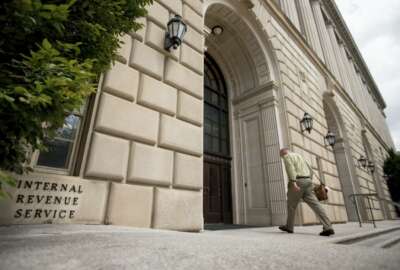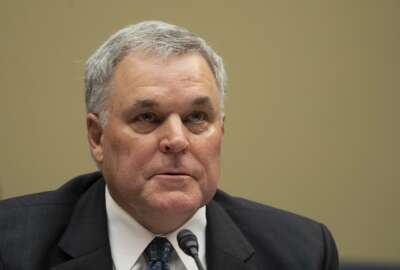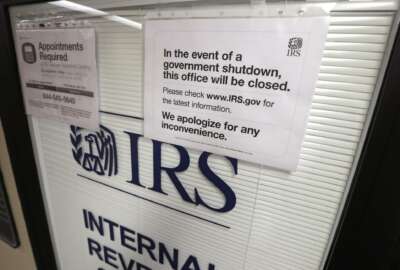

The National Taxpayer Advocate is warning Congress that the IRS has fallen behind on hiring goals in recent years, and that its human resources office may not have...
The IRS is gearing up for a surge in hiring under the Biden administration’s long-term proposal to reverse a decade of budget and workforce cuts.
But the National Taxpayer Advocate, an internal agency watchdog, is warning Congress that the IRS has fallen behind on hiring goals in recent years, and that its human resources office may not have the resources needed to bring a large influx of new hires into the agency.
National Taxpayer Advocate Erin Collins, in her annual report to Congress, said the IRS failed to hire more than 5,000 full-time employees it planned to bring onboard between fiscal 2017 and 2019, despite allocating funding for this workforce increase.
The IRS told Congress last year it has 33,000 fewer employees than what it had in 2010. During this decline, Collins said the IRS has been “unable to keep pace with its projected hiring, causing positions that help carry out its crucial mission of tax administration to go unfilled.”
Nearly 5,600 employees leave the IRS each year, and as far as employees who will be retirement-eligible, Collins estimates as much as 32% of the IRS workforce could leave the agency next year.
“If the IRS does not make significant changes, these staffing shortages will compound and pose significant threats to the U.S. Treasury and indirectly harm taxpayer services and voluntary compliance,” Collins said.
Faced with these challenges, Collins urged lawmakers to approve a higher IRS budget that includes multi-year funding to support these hiring initiatives and overcome workforce attrition.
“The IRS’s success relies heavily upon its workforce and employee skillsets to accomplish its mission and provide quality taxpayer service. Therefore, it is imperative the IRS not only receive the funding necessary to support programs but also be able to attract, hire, and retain the right individuals to deliver these programs,” Collins wrote in her report.
In addition to engaging with the IRS on hiring, recruitment and retention goals, Collins said her office will also determine whether the agency needs the direct-hire authority Commissioner Chuck Rettig recently requested from members of the Senate Finance Committee.
IRS Commissioner Chuck Rettig recently told Congress that the hiring surge is meant to get ahead of 52,000 IRS employees expected to retire or leave the agency over the next six years. This projection, Rettig said, takes into account that most IRS employees stay on the job five years after they reach retirement eligibility. The agency has a workforce of about 83,000 employees.
Agencies have long feared a “retirement wave” in the federal workforce, but those concerns have not materialized in recent years. However, the IRS remains wary of its ability to retain current staff.
Rettig recently told lawmakers he’s looking to hire an additional 5,000 employees for the agency’s enforcement operations. The agency currently has 6,500 revenue agents in the field.
The IRS’s Human Capital Office manages agency hiring, but the office itself has seen its staffing decline over the years.
Collins notes the HCO is taking steps to hire additional staff and is implementing changes to its processes but warns a more than 10% increase in IRS funding in FY 2022 “will leave HCO unprepared to manage the increase hiring demand without additional resources.”
“This may lead to HCO having to prioritize certain hiring over the total need of the IRS,” Collins wrote.
House lawmakers, at this early stage in drafting next year’s spending bill, have supported the Biden administration’s spending request for the IRS.
The House Appropriations Committee’s subcommittee on financial services and general government approved a spending bill last month that would give the IRS $13.6 billion in fiscal 2022 — more than a 14% increase from current spending levels, and higher than the White House’s request for the agency.
The administration, in a Treasury Department report released in May, proposed increasing the IRS workforce by a maximum of 15% each year for the next 10 years, with a focus on hiring enforcement and taxpayer service personnel.
The agency, under this plan, would also see its budget increase by about 10% year over year.
For all the agency’s challenges, Collins acknowledged the IRS also took on an unprecedented workload and stood up new programs during the COVID-19 pandemic. The IRS, she wrote, issued 475 million Economic Impact Payments worth $807 billion across all three waves of payments.
During this year’s filing season, the IRS processed 136 million individual income tax returns and issued 96 million refunds totaling $270 billion.
“The IRS and its employees deserve tremendous credit for what they have accomplished under very difficult circumstances, but there is always room for improvement,” she said.
But as a result of the pandemic’s challenges, the IRS’s 15,000 customer service representatives (CSRs) were overwhelmed by the volume of calls from taxpayers this year — more than four times the number of calls than it received in 2020, reaching a peak at one point of 1,500 calls per second.
“Needless to say, IRS employees could not handle this massive volume of calls,” Collins wrote.
The IRS reported a 15% level of service for its account management phone lines, with only 7% of callers reaching call center employees.
One of the agency’s most-called phone lines for individual income tax assistance logged about 85 million calls, but only 3% of callers got through to a customer service representative.
“These are difficult conversations to have and difficult for taxpayers to experience. In many cases, CSRs cannot determine the status of a taxpayer’s return or pending refund and are doing the best they can,” Collins said.
Congress funded the IRS to provide a 60% level of service —meaning the IRS would be staffed to answer six out of every 10 calls. Collins said that figure is “unacceptable,” even under the best of circumstances.
Meanwhile, the report found the IRS ended the filing season with a historically high backlog.
Nearly 17 million were paper tax returns are waiting to be processed, while almost 16 million returns required further review from the IRS. Collins said the backlog raises the need for the IRS to offer more of its services online.
Collins said the IRS’s historically high backlog means taxpayers may not receive timely refunds and will have to wait until the agency can process their returns.
“For taxpayers who can afford to wait, the best advice is to be patient and give the IRS time to work through its processing backlog. But particularly for low-income taxpayers and small businesses operating on the margin, refund delays can impose significant financial hardships. Not everyone can afford to be patient,” Collins said.
Copyright © 2025 Federal News Network. All rights reserved. This website is not intended for users located within the European Economic Area.
Jory Heckman is a reporter at Federal News Network covering U.S. Postal Service, IRS, big data and technology issues.
Follow @jheckmanWFED



